On this page we will be highlighting a selection of Laenen’s
work, focussing on different themes and periods within his
practice. The selection will change on a regular basis.
EARLY WORKS
Maternité
1957
Wood
166 x 42 x 38 cm
Unique
Starting off in his early twenties with painting and drawing, Laenen gradually began to feel restricted by this medium and the second dimension at large. This pushed him to explore new horizons, leading him to sculpture and the 3rd dimension. Early experiments with different techniques and materials result in direct carving in wood, marble, and bluestone, while progressively opening up a dialogue between form, light and space.
Photography: Dries Van den Brande (left), archive Jean-Paul Laenen (right)


De vogels - Les oiseaux
1958
Wood
h 120 cm
Unique
Private collection
Photography: archive Jean-Paul Laenen


Figure accroupie
c. 1958
Wood
Unique
Private collection
Photography: archive Jean-Paul Laenen
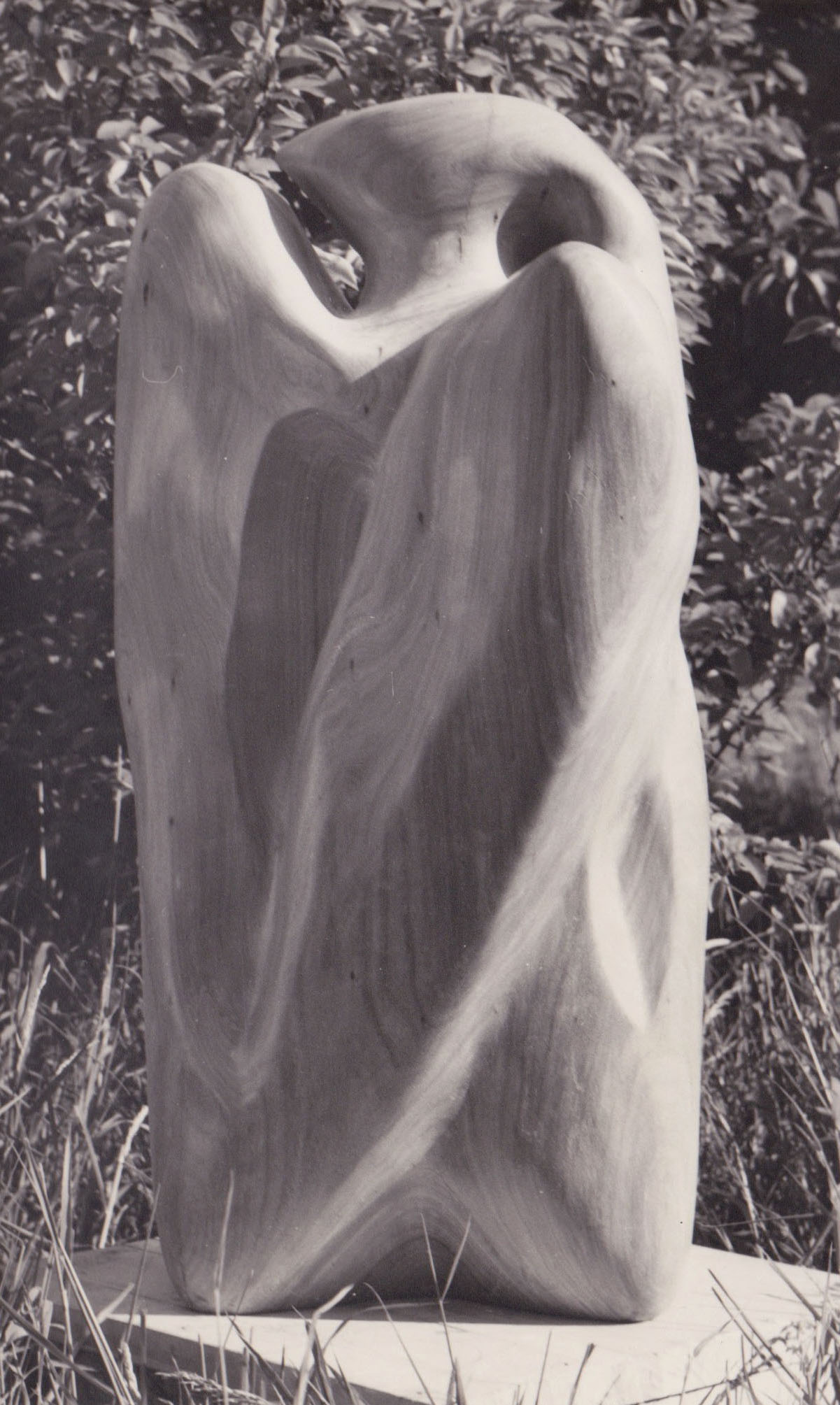

Kathedraal II - Cathedrale II,
c. 1959
Bluestone
92 x 18 x 12,5 cm
Unique
Photography: Dries Van den Brande (top left, bottom) archive Jean-Paul Laenen (top right)
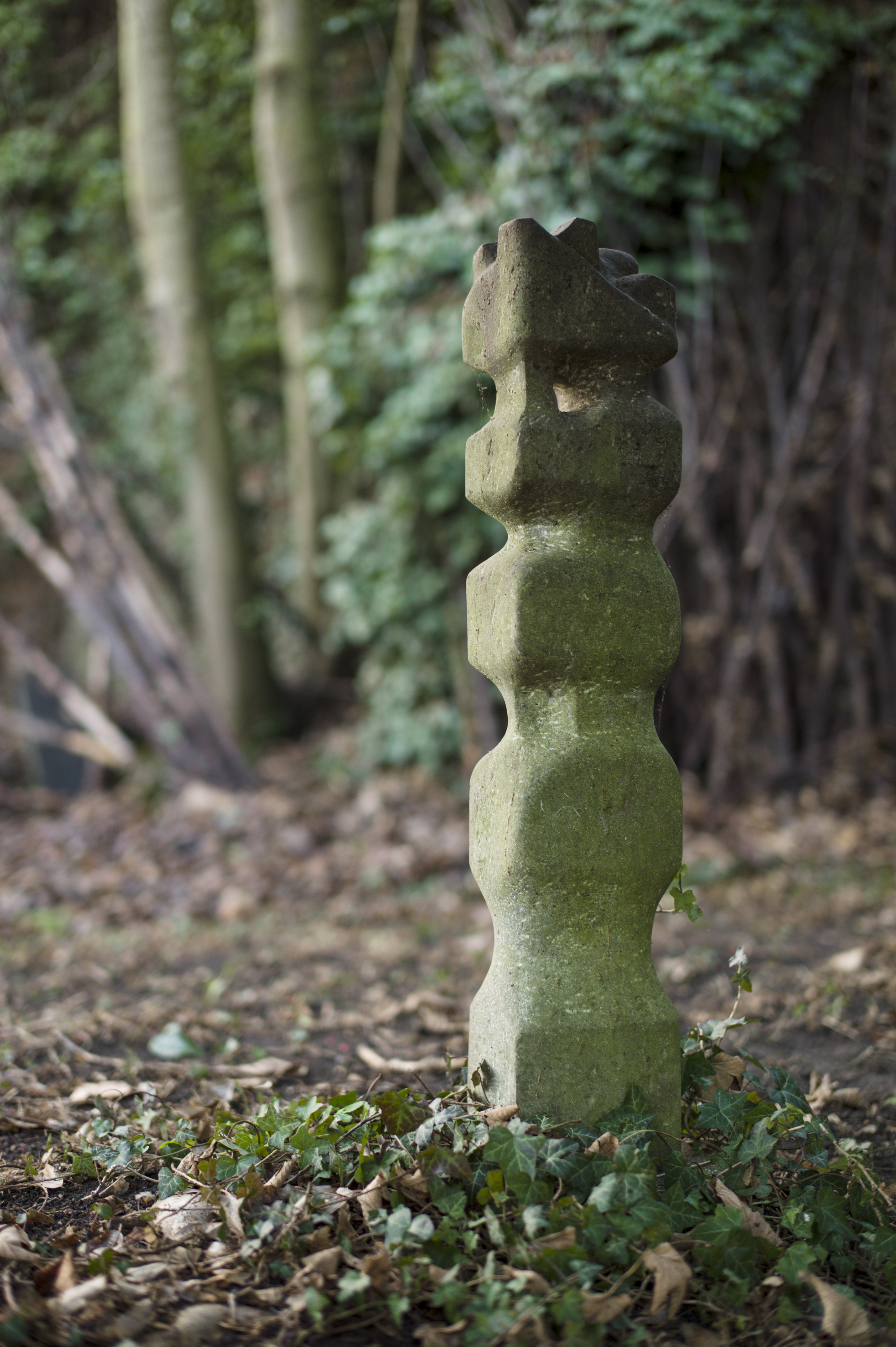


Untitled
c. 1959
Bluestone
118 x 33 x 31 cm
Unique
Two scholarships at the Scuola del Marmo in Carrara, in 1959 and 1961, paved the way for a series of direct carvings in marble and bluestone.
Photography: Dries Van den Brande

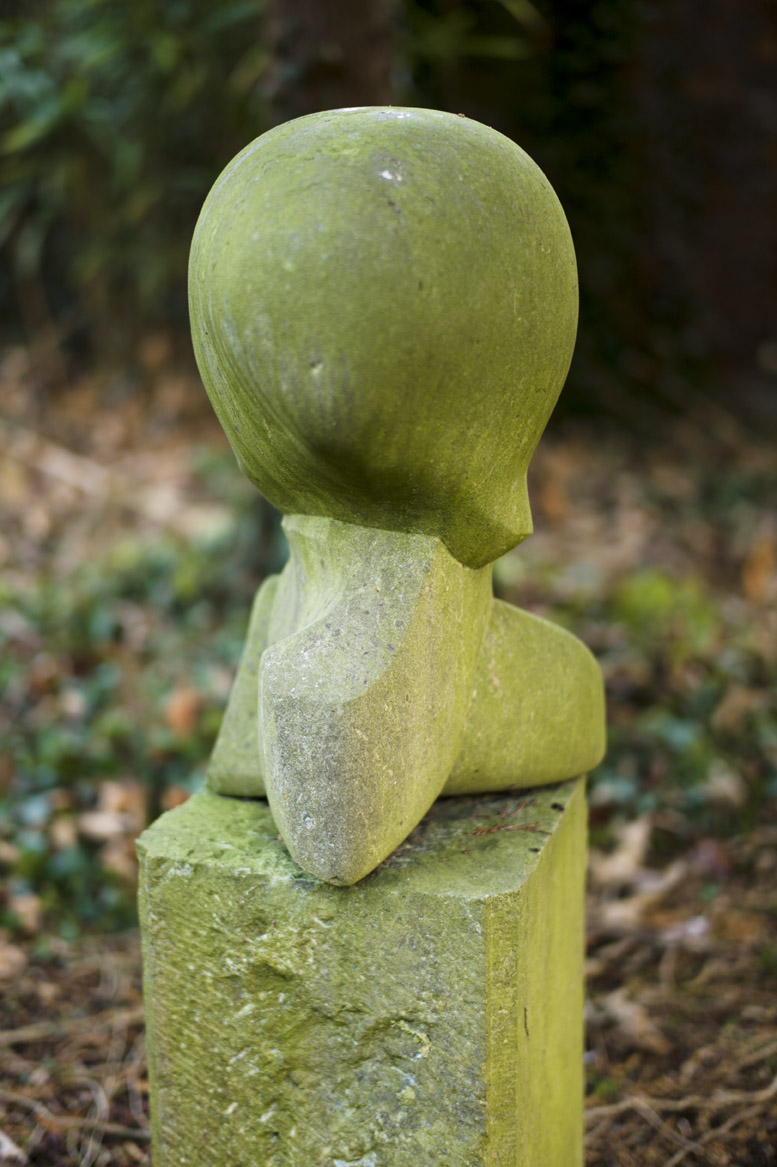
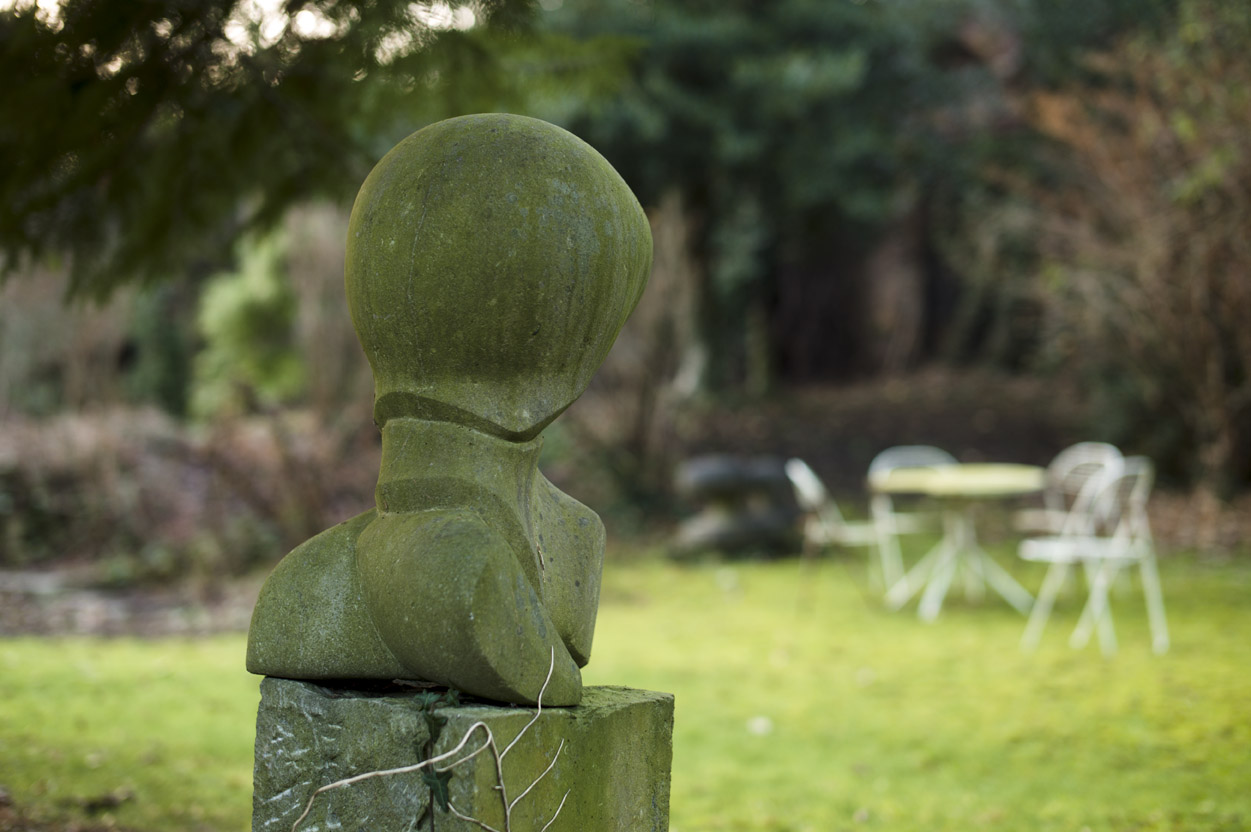
Afrika - Africa
1959
Bluestone
73 x 113 x 55 cm
Unique
Photography: archive Jean-Paul Laenen (top left), Dries Van den Brande (top right & bottom)

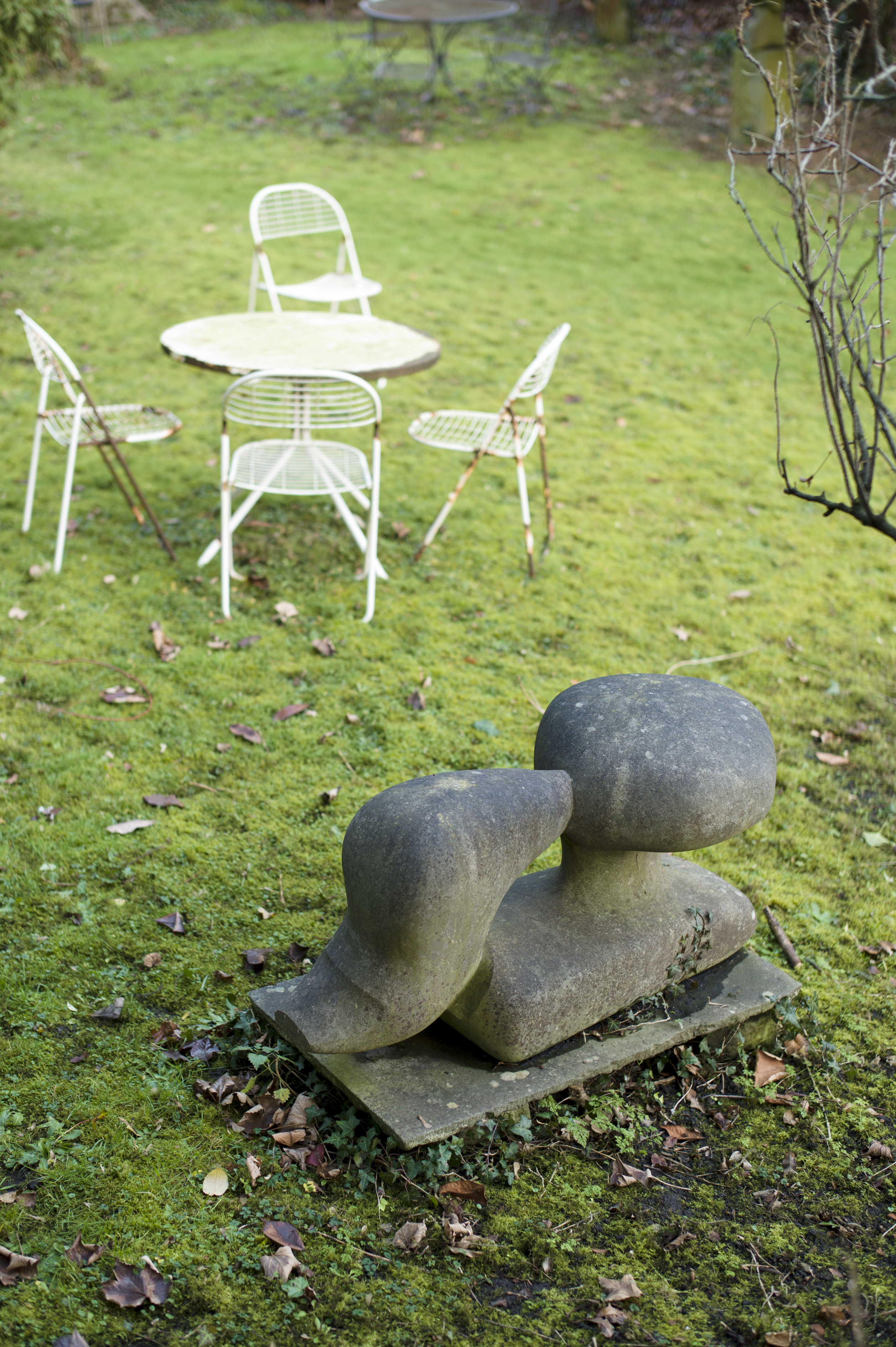
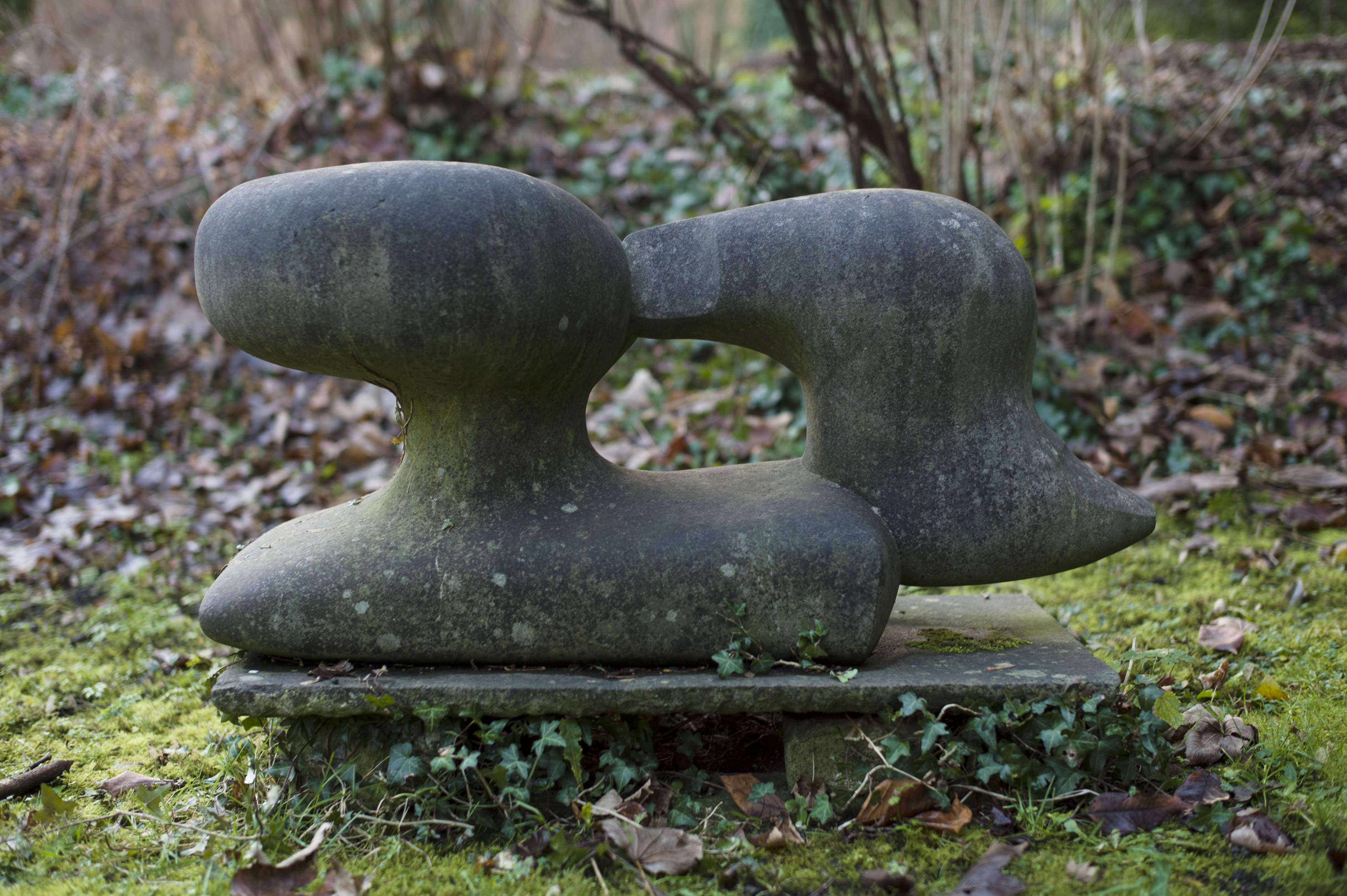
Forme interrompue - Onderbroken vorm
1960
Wood, bluestone
137 x 13 x 13 cm
Unique
Photography: Kristien Daem




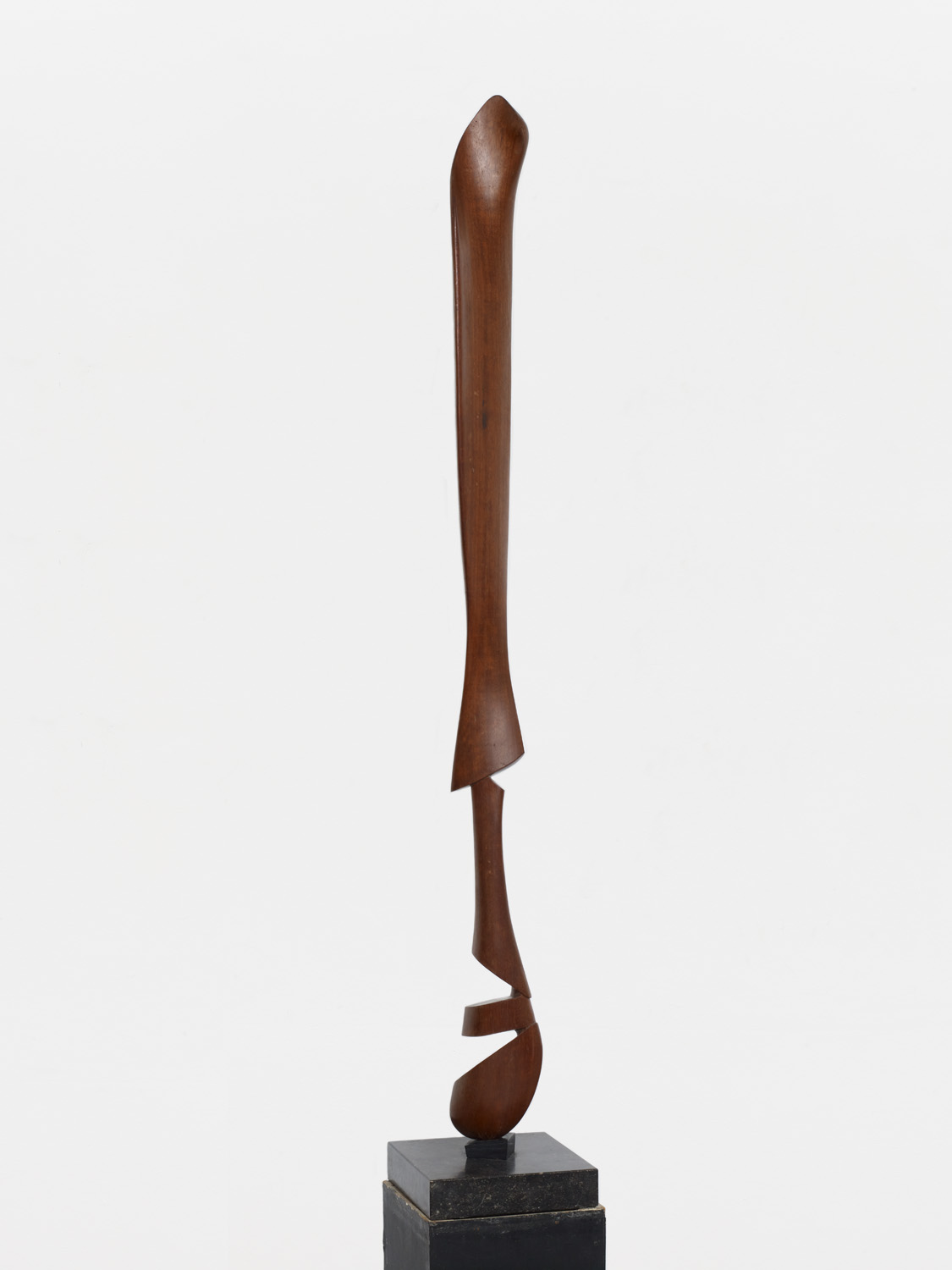
Semence - Zaad
1960
Wood
90 x 30 x 10 cm
Unique
I started carving [wood] in Norway. Purely for myself, as things did not go very smoothly at the academy or art school. I managed to get hold of a magnificent piece of wood. I was allowed to work in it on condition that I would first make a nice object in clay that would please the director. However, and much to the dismay of the director, I was opposed to the idea of making a clay model first. I was looking for the boundaries of the material, a constraint that, I hoped, would teach me what it was that I was doing and why.
(Trans. from “Gesprek met Jean-Paul Laenen”, interview by Ludo Bekkers, Streven 11/12, Aug-Sep 1969.)
Photography: Kristien Daem


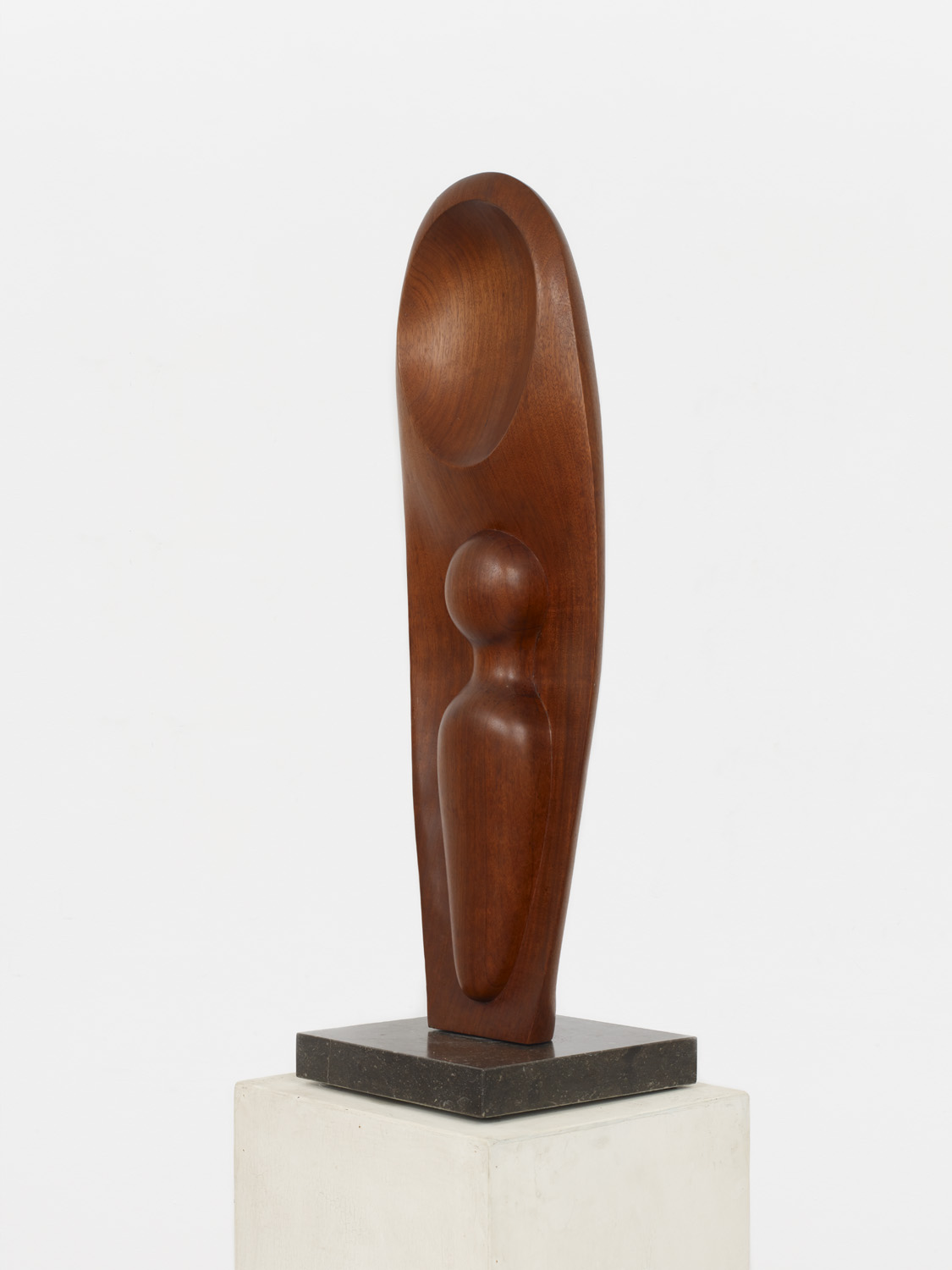
Evenwicht - Equilibre,
1960
Wood, steel
92 x 96 x 36 cm
Unique
Photography: archive Jean-Paul Laenen




Dionysos
1960
Bronze, stone
15 x 28 x 24 cm
Edition of 3, varying stones
Photography: Kristien Daem



GLASS
Dans la sphère - In de sfeer
1961
Glass, lead, marbrit
80 x 90 x 90 cm
Unique
Through my work in the bronze foundry, I discovered the possibilities of defining and structuring space, which in turn led me to discover new aspects of the material. Metal, for example, can both reflect and absorb light. Metal allowed to absorb space in a particular way. (…) Material had taken on a whole new meaning for me. It had a density, a texture, something I would like to call colour now. I experience it as a colour. When I combined two different materials at the time, it was mainly with this purpose. The transparent volume of glass, for example, and the opacity of the lead; here too, it was primarily a colour combination of the green cut of the glass and the lead’s various shades of grey.
(Trans. from “Gesprek met Jean-Paul Laenen”, interview by Ludo Bekkers, Streven 11/12, Aug-Sep 1969.)
Photography: Galerie La Patinoire Royale, Brussels
Ètude pour un volume transparent avec double projection - Studie voor een transparant volume met dubbele projectie
1962
Glass, marbrit
(l) 200 cm
Unique
Private collection
Photography: André Sornasse (top),
I. van Baelen (bottom)
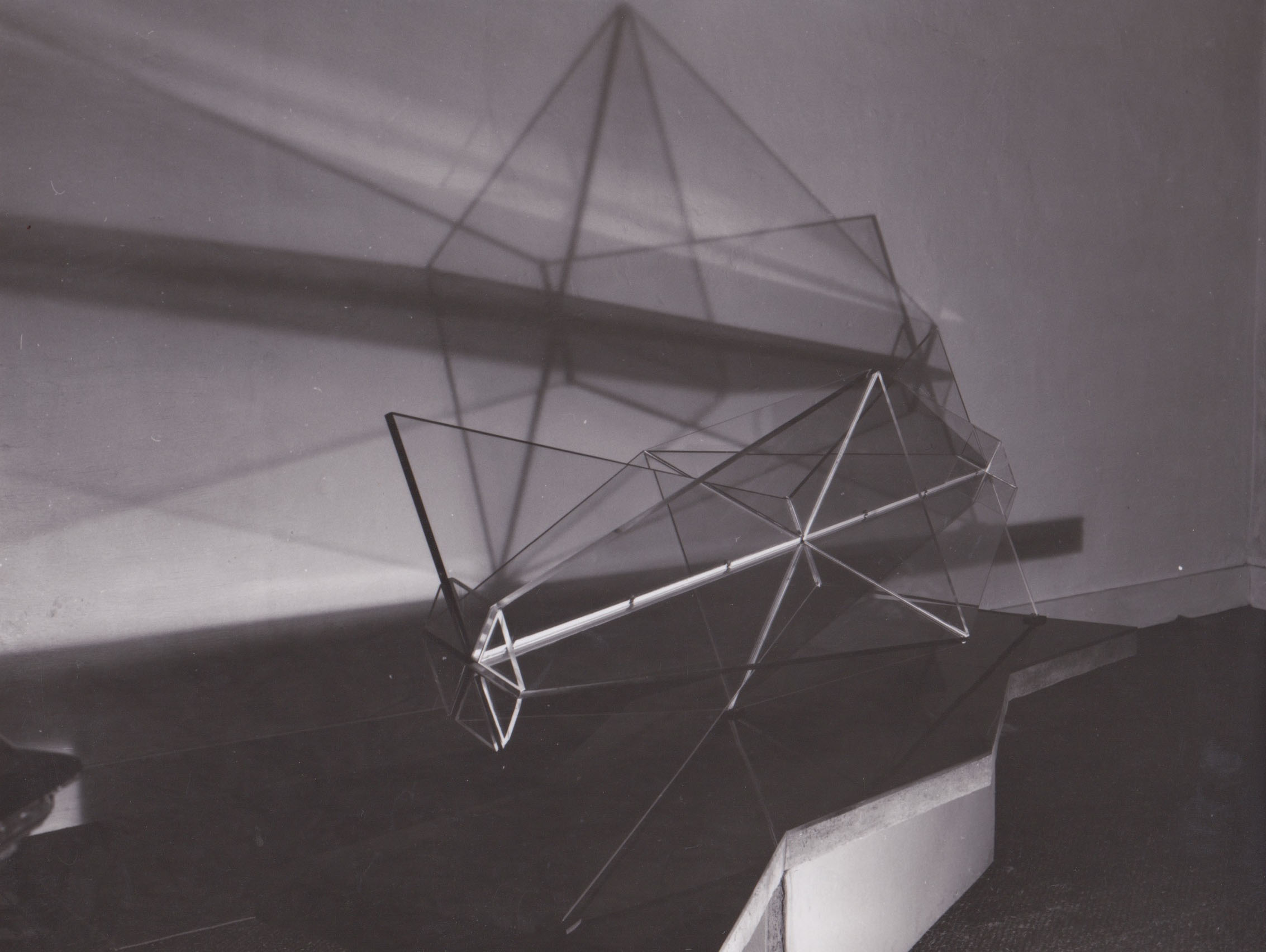
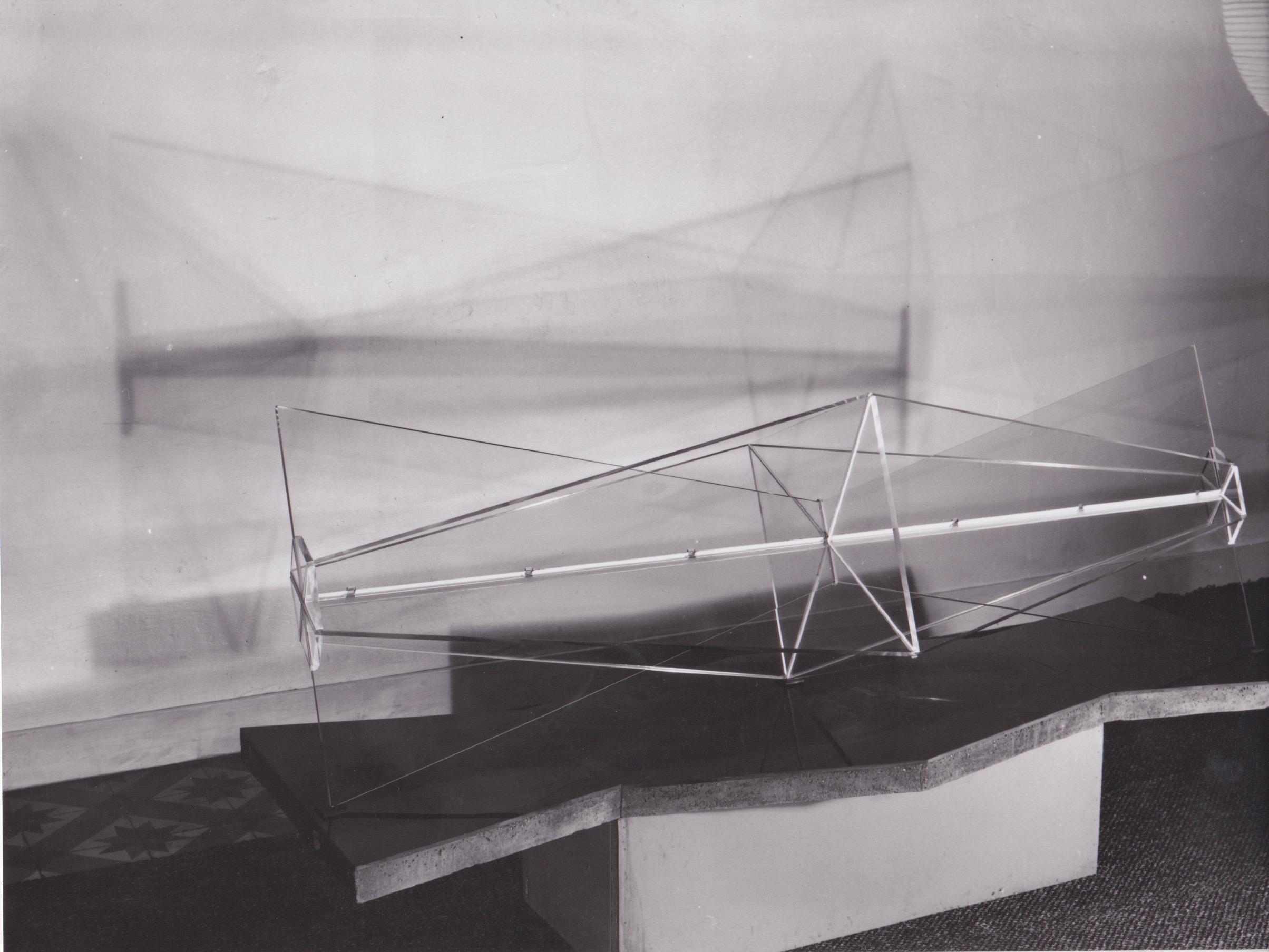
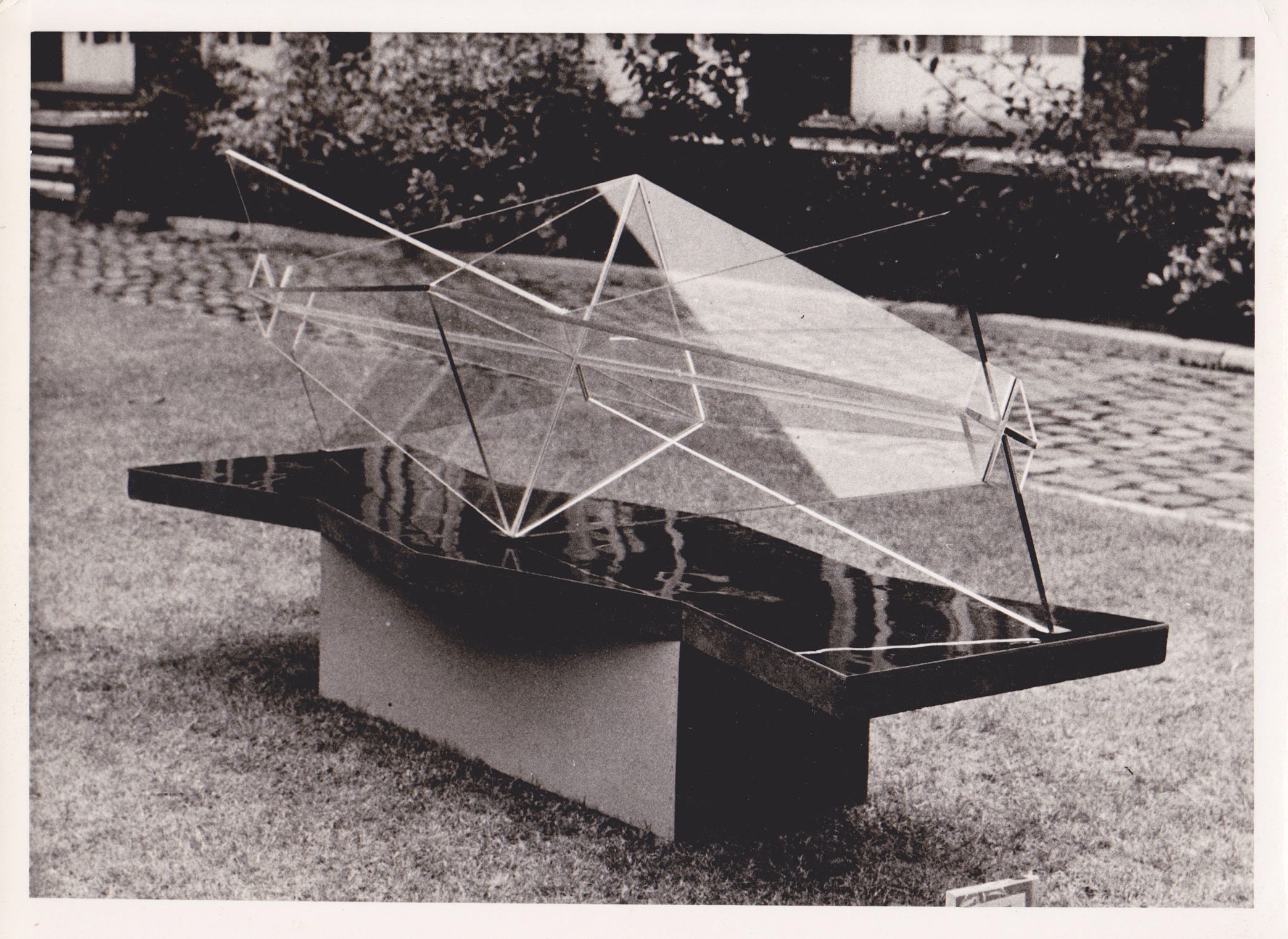
PRISMS
Capte soleil - Zonnegeleider
1971
Plexi, mirror
25 x 25 x 18 cm
Edition of 100
Laenen's fascination with light refraction is one of the recurrent themes within his practice, which manifests itself in both the three-dimensional and two-dimensional works. This work from 1971, the first one in the ‘Capte Soleil’ series, is his only real multiple (this is without taking the penultimate 5 Francs coin into account).
Photography: Kristien Daem
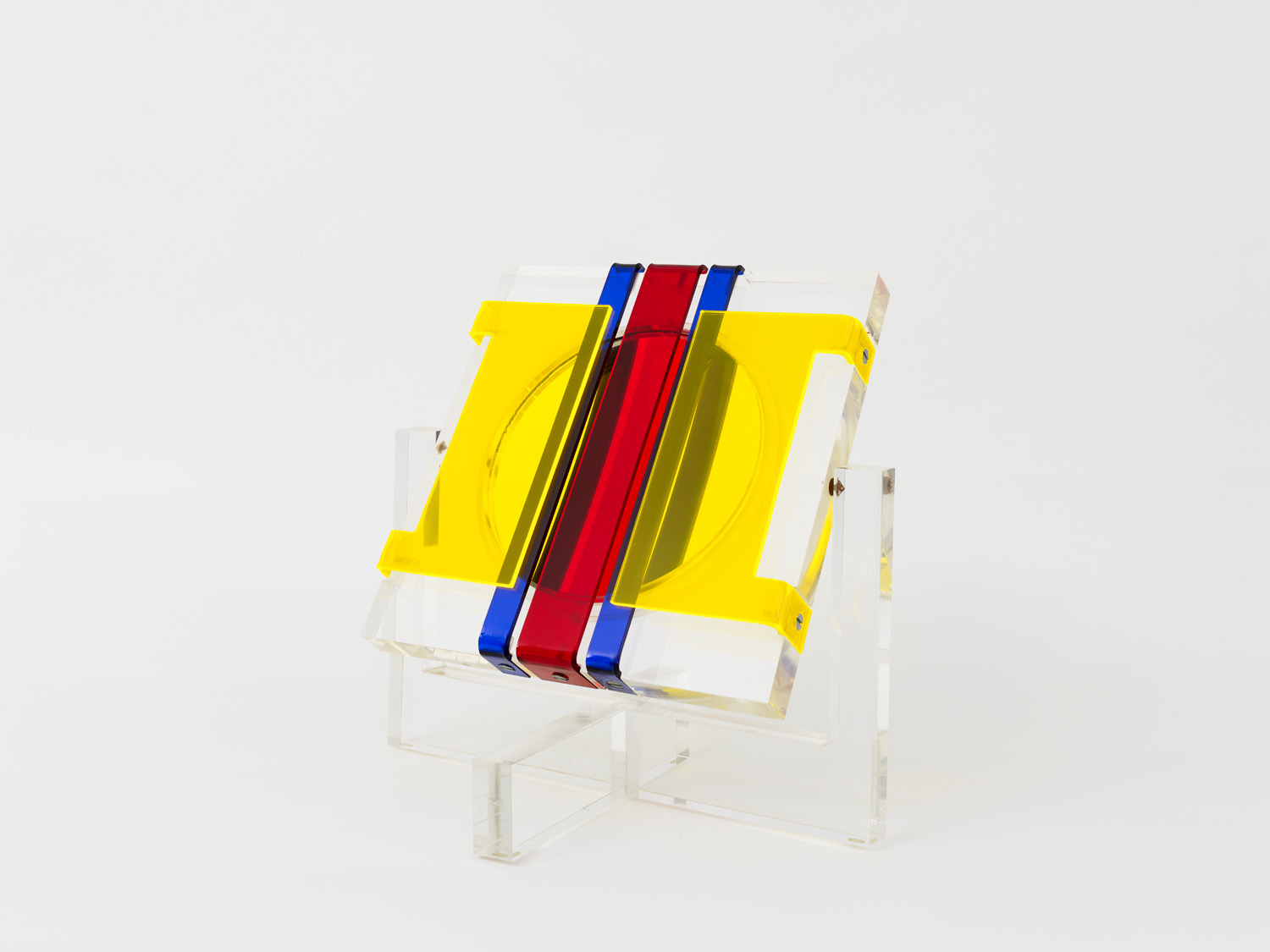
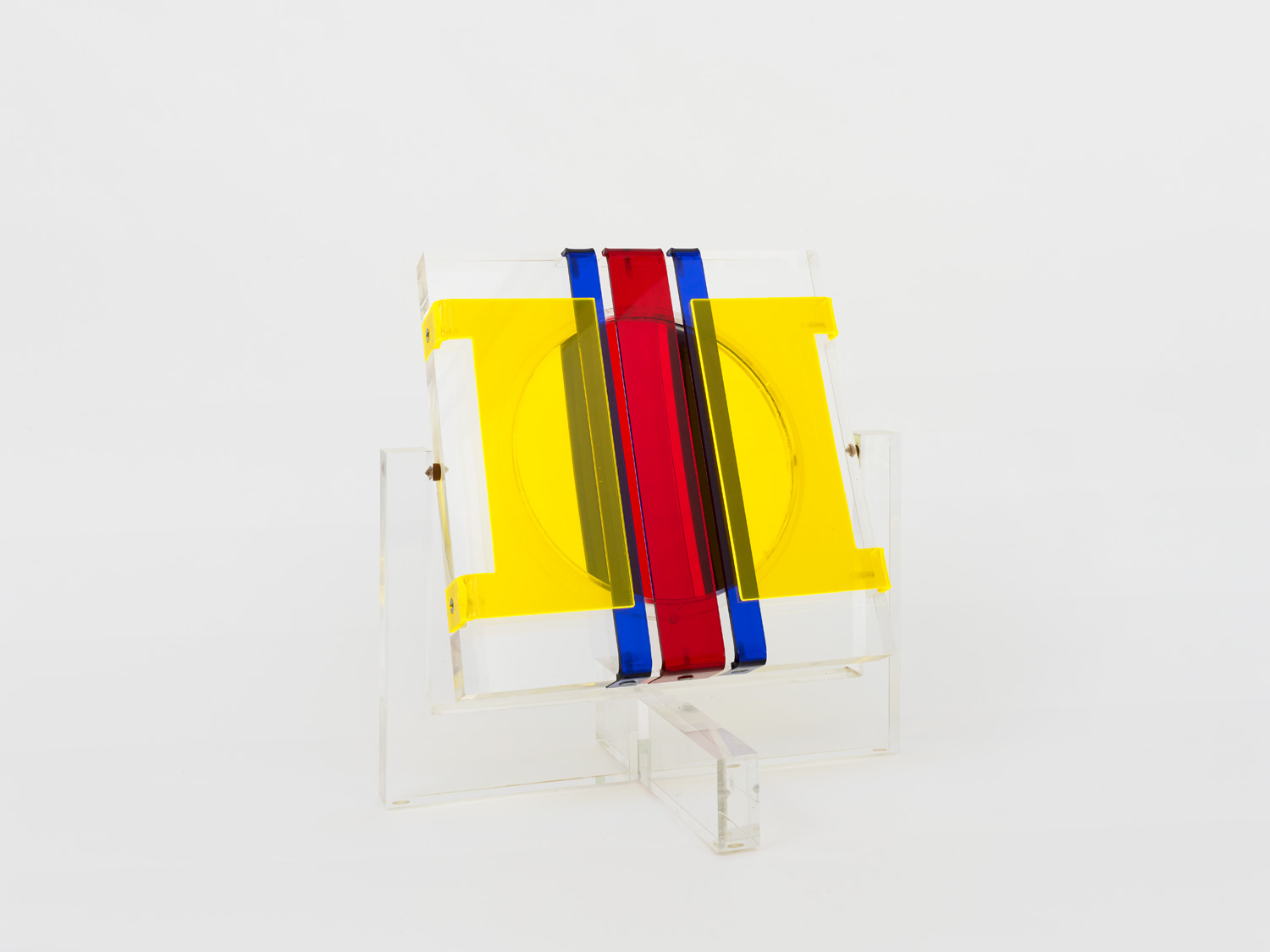


Modulation verticale - Verticale modulatie
1996
Plexi, mdf, lacquer
159,5 x 29 x 29 cm
Unique
Photography: Kristien Daem
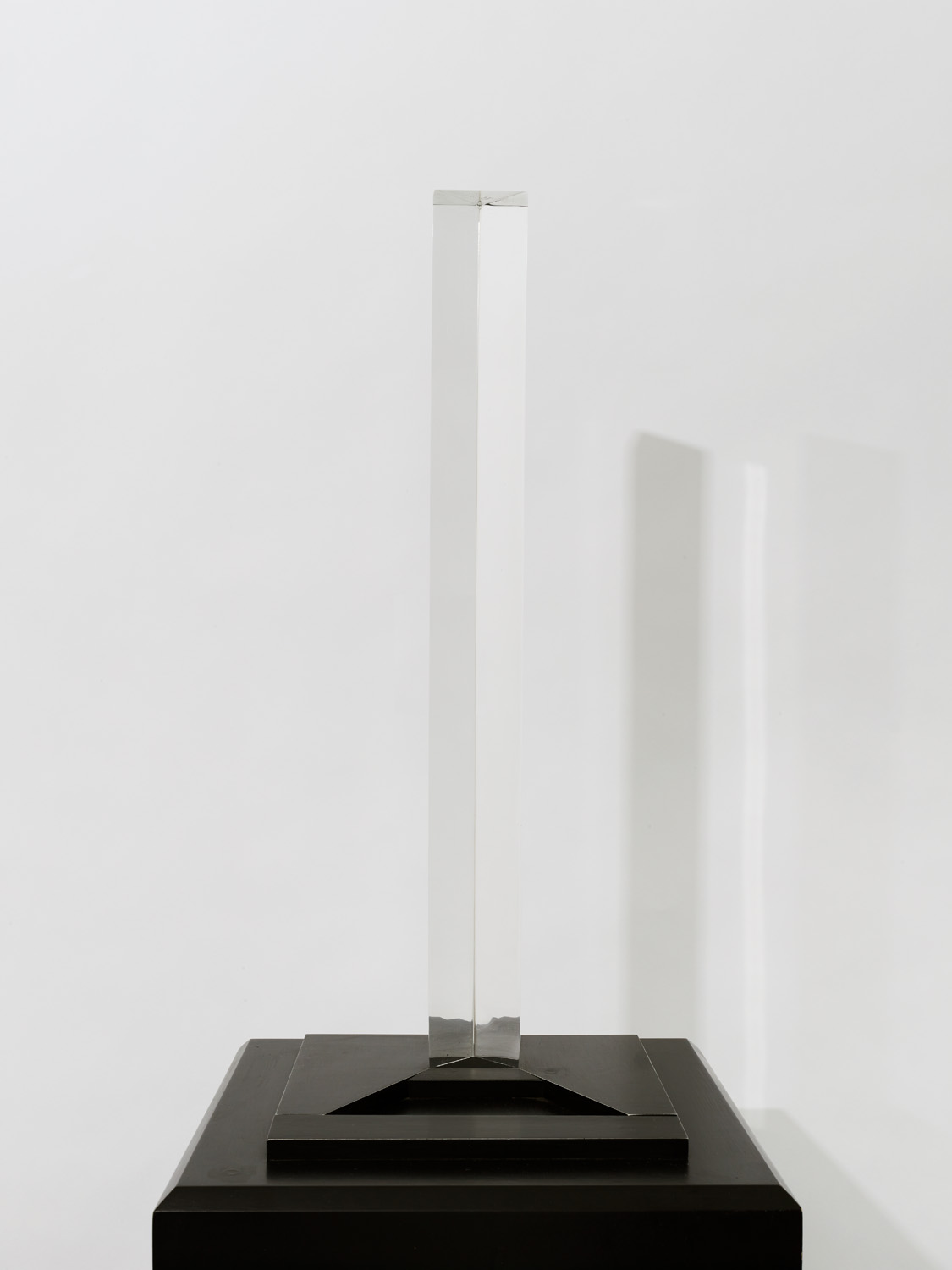

Capte soleil - Zonnegeleider
1997
Copper, lead, plexi, mirror, steel
44 x 36 x 12 cm
Unique
Following his 1971 multiple, Laenen made a reprise of two slightly varying works bearing the same title in 1997. In these later works he added various materials including lead and copper.
Photography: Kristien Daem


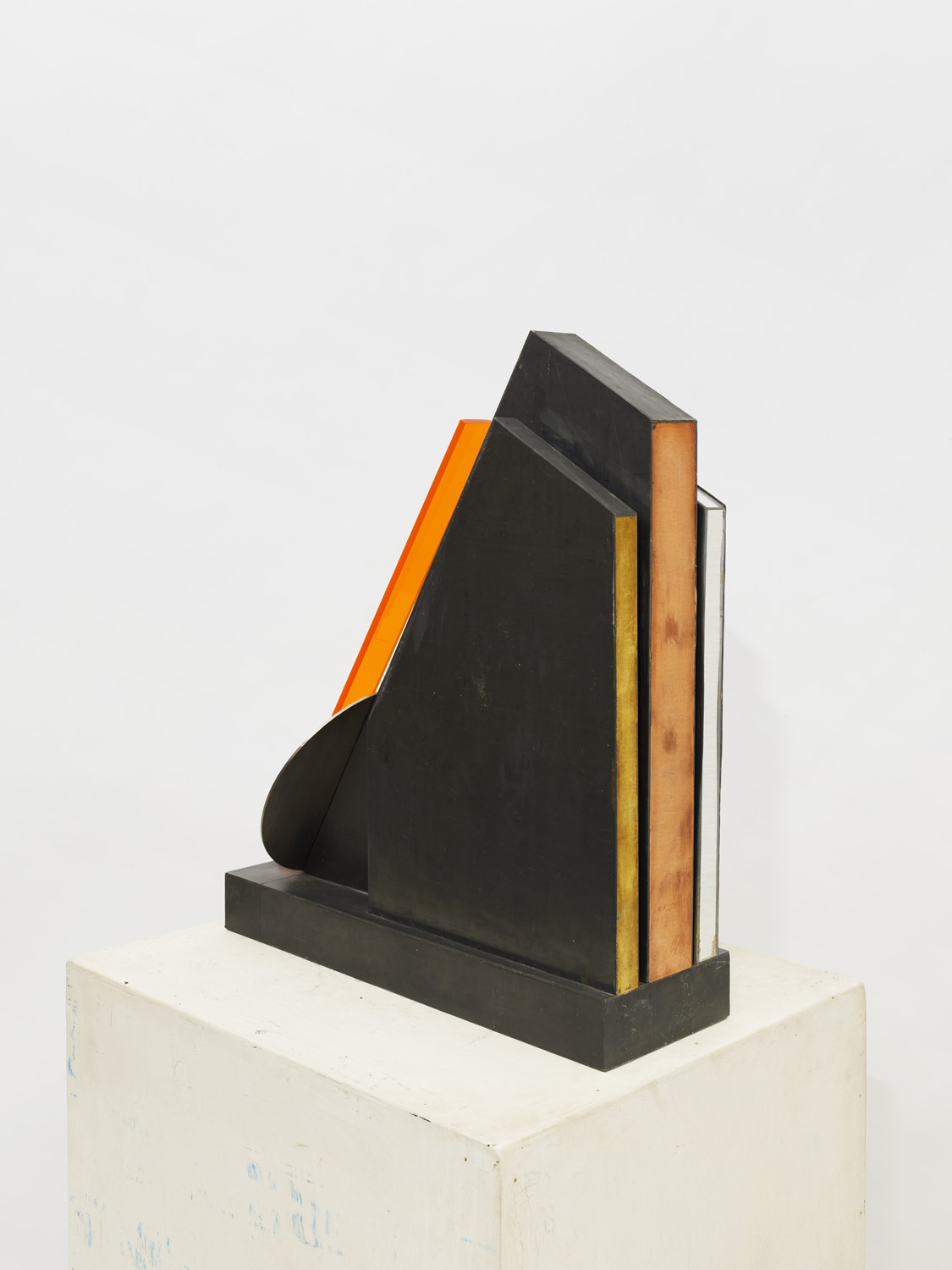

Capte soleil - Zonnegeleider
1997
Copper, lead, plexi, mirror
36 x 25 x 13 cm
Unique
Photography: Kristien Daem



BRONZES (& BRASS)
Homo Sapiens
1960
Polished brass
50 x 28 x 26 cm
Edition of 3
When Laenen first started thinking about bronze, he went to the Fonderie Nationale to learn to work with bronze and produce his first works in bronze on the spot. His time at the foundry led him to discover that form could exist in the cavity, i.e. be defined by the absorption of space, and that the polishing of metal was also a means of absorbing space.
Collection Mu.ZEE, Ostend (BE)
Photography: archive Jean-Paul Laenen
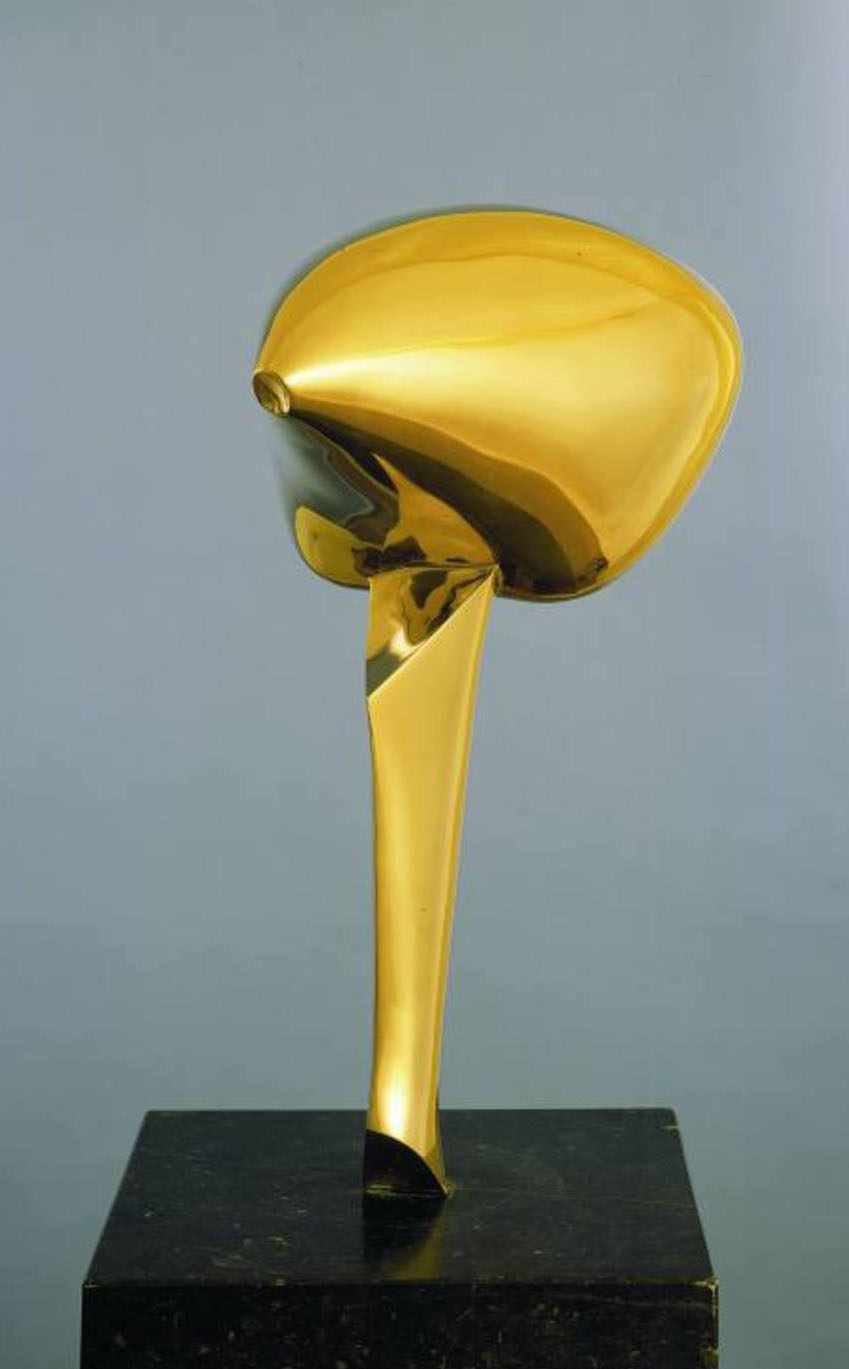

Aqua I
1960
Polished brass / bronze
31 x 15 x 10 cm
Edition of 3
Photography: archive Jean-Paul Laenen

Aqua II
1960
Polished brass / bronze
40 x 12 x 9 cm
Edition of 3
Photography: archive Jean-Paul Laenen
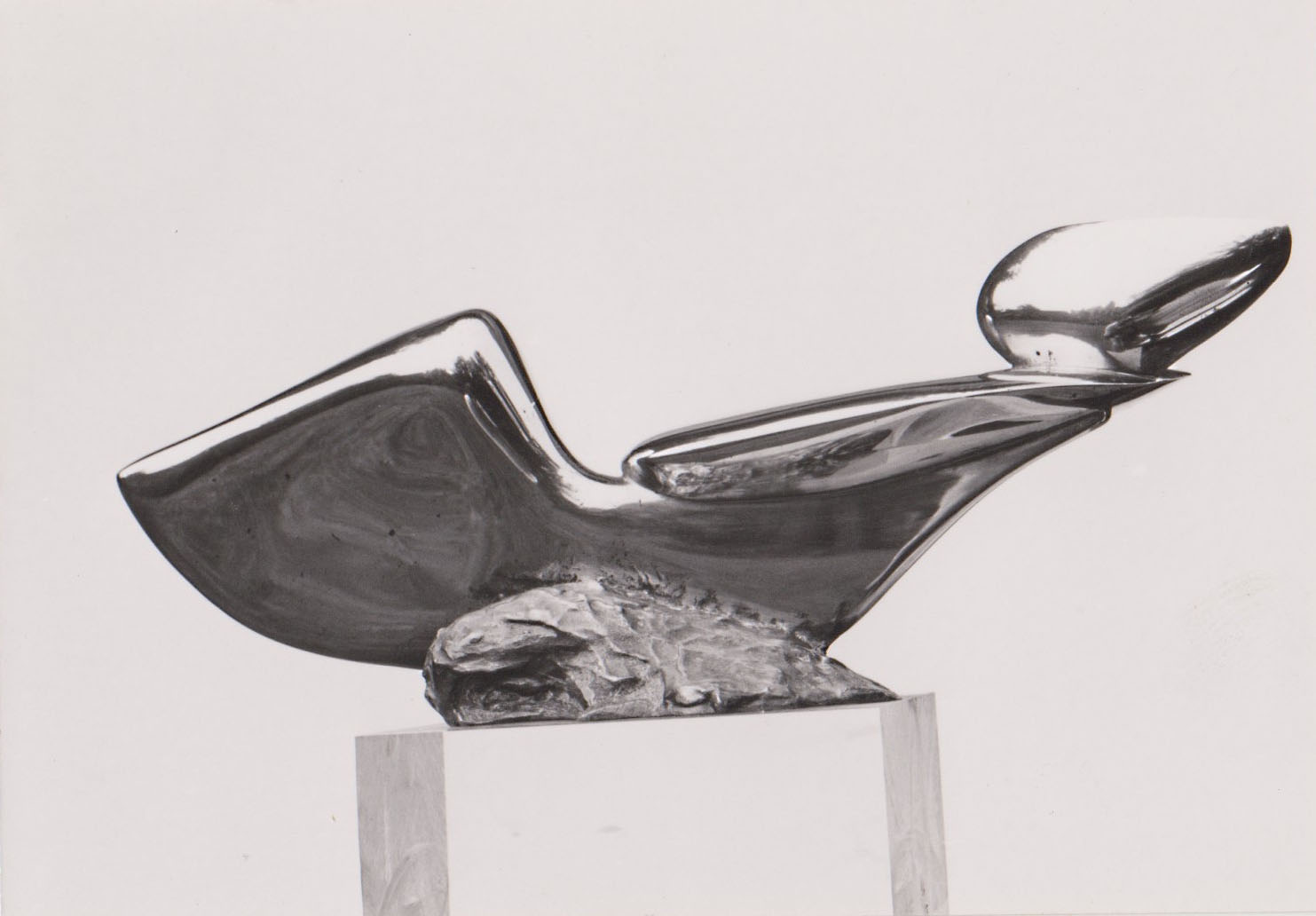

Espace-Lumière - Licht-Ruimte
1961
Polished brass
50 x 90 x 13 cm
Edition of 5
From 1961 onwards, his sculptural vision developed in the sense that the materials he had been using up to that point no longer corresponded to the goal he had set himself. From then on, he found suitable materials in glass, bronze and aluminium, which enabled him to develop his line of research. These experiments thus began in 1961 and show two aspects: firstly, the elaboration of the problem ‘colour/reflection’ - in which he, on the one hand, tried to enrich the volume by adding colour and, on the other hand, tried to work out the dissolving effect of the reflecting matter - secondly his intention was to define the surrounding space, not by the closed mass, but by the ‘emptiness’, the ‘depth’. The works from 1961 and 1962, in which the artist experiments with effects of reflection, transparency, dullness, and mattness or brilliance, are still of rather modest size.
(Trans. from “Kanttekeningen bij Overgang, een sculptuur van J.P. Laenen”, H. Bex-Verschaeren, Yearbook 1970, Royal Museum for Fine Arts, Antwerp, Overdruk, 1970)
Photography: Dries Van den Brande

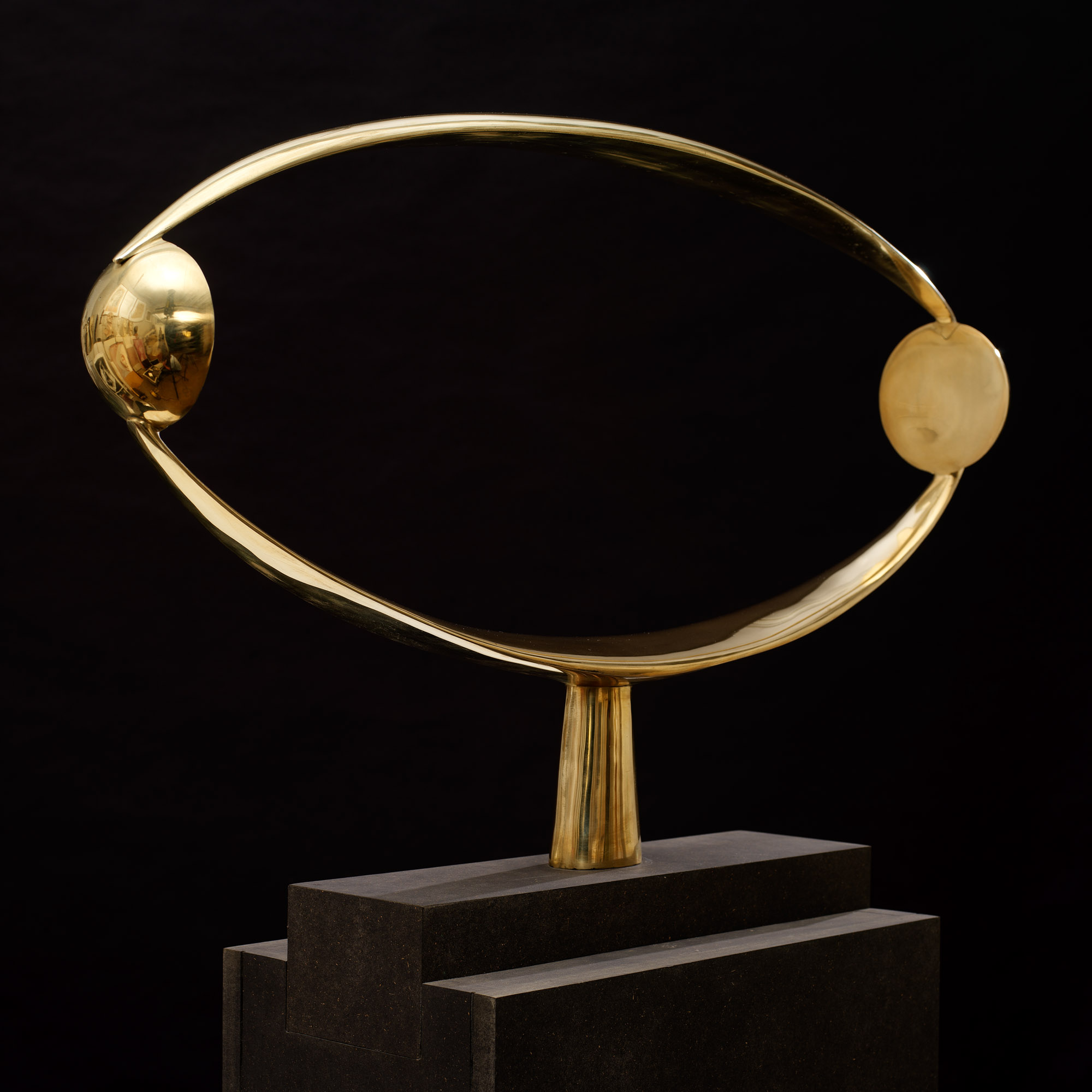

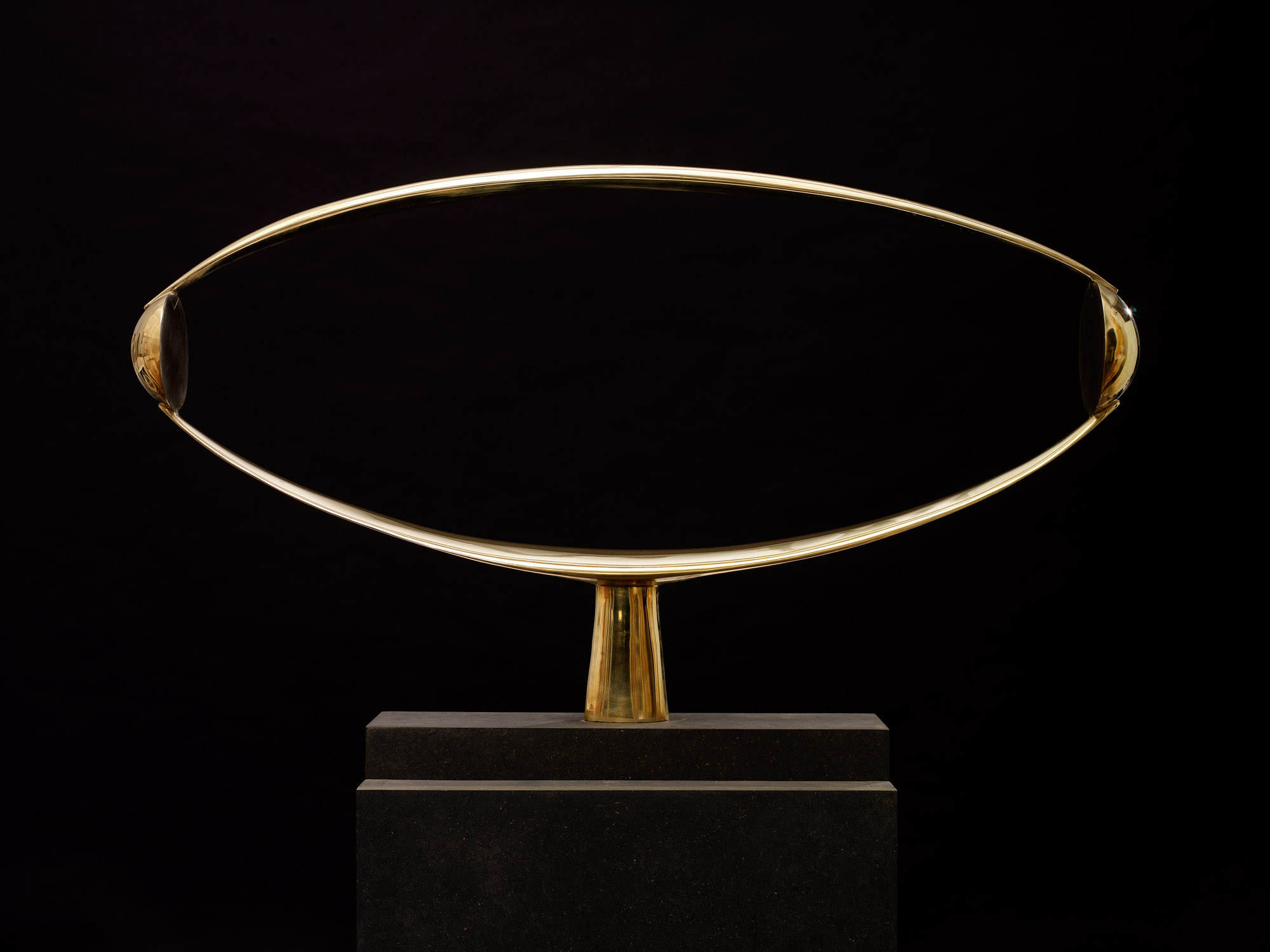
Forme-lumière - Licht-vorm
1961
Brass, polished on one side, satinated finish on the other
92 x 98 x 9 cm
Edition of 3
Collection of the Belgian State
Photography: archive Jean-Paul Laenen
Relief sur fond noir brillant et blanc mat -
Reliëf op glanzend zwart en mat wit
1962
Polished brass, lacquer, marbrit
60 x 60 x 6 cm
Edition of 3
Photography: Dries Van den Brande (left)


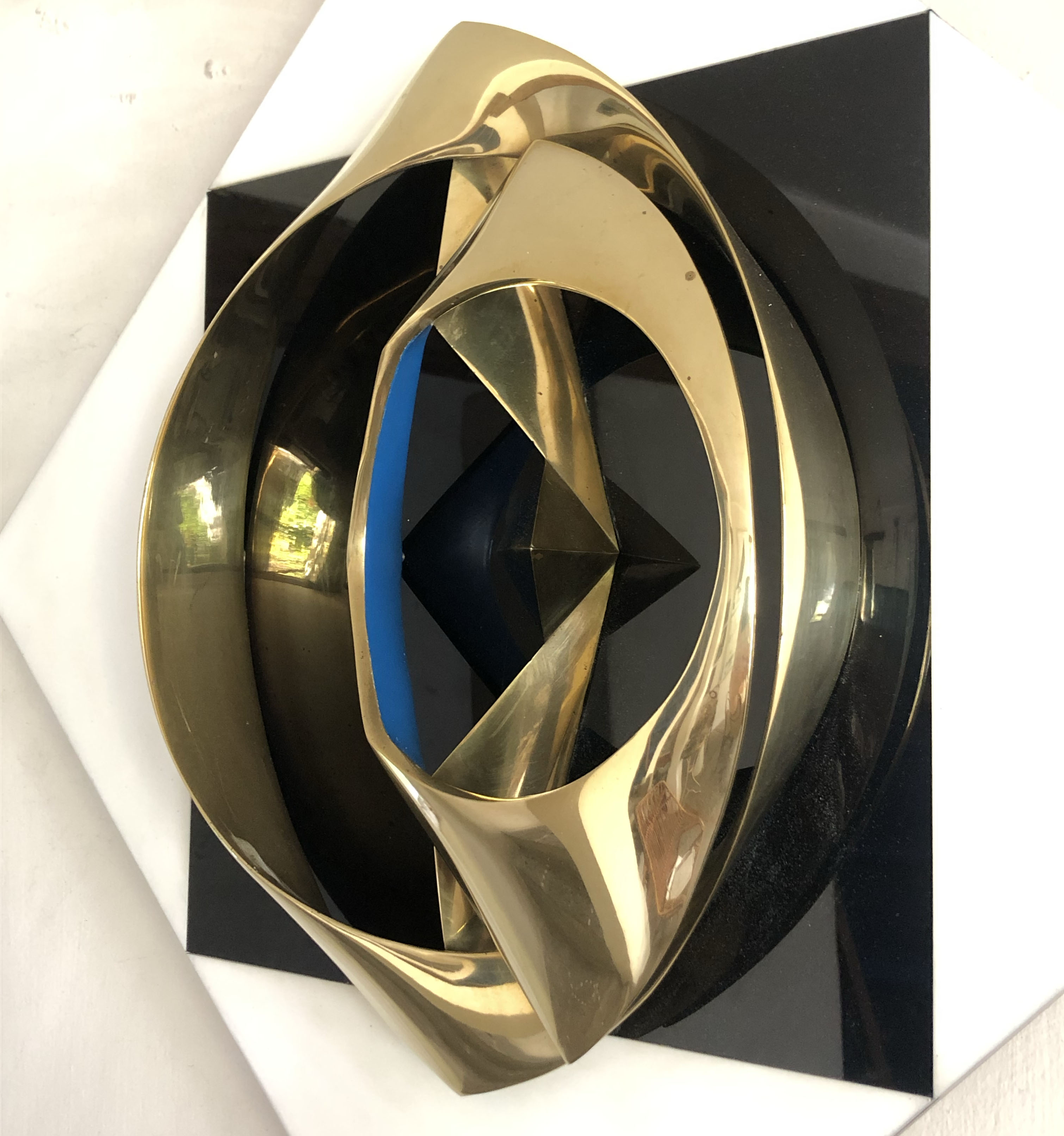

‘ESPACES’
Mouvement concentrique - Concentrische beweging
1963
Polished bronze with high copper content, lacquer
125 x 120 x 30 cm
Unique
Collection of Middelheim Museum, Antwerp
Photography: Photos ANTOINE - Berchem, Bruxelles (top left); Inauguration during the Middelheim Biennale, unknown - archive Jean-Paul Laenen (top right, bottom right); Mouvement concentrique in Laenen’s studio in Mechelen, unknown - archive Jean-Paul Laenen (bottom left)


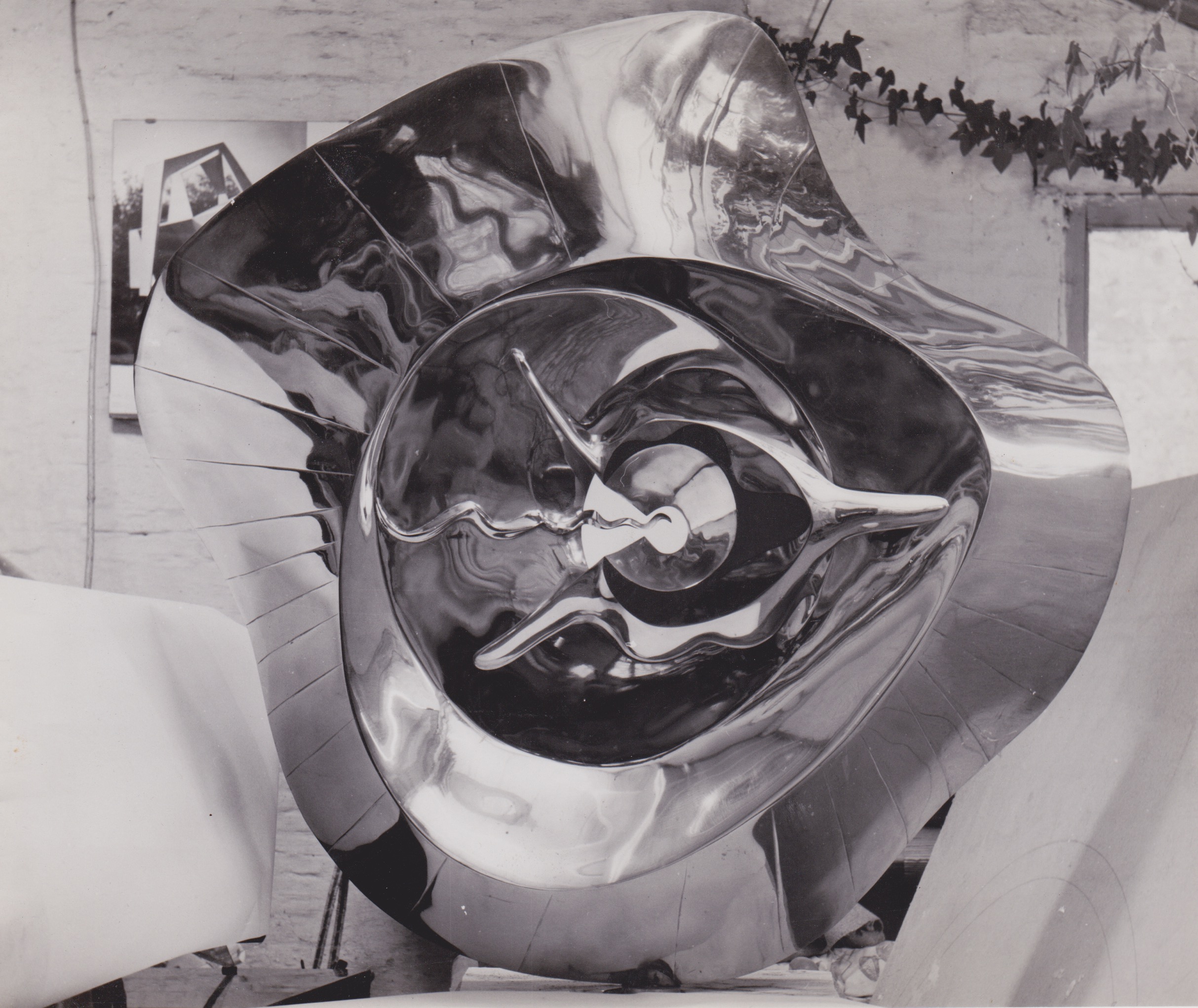
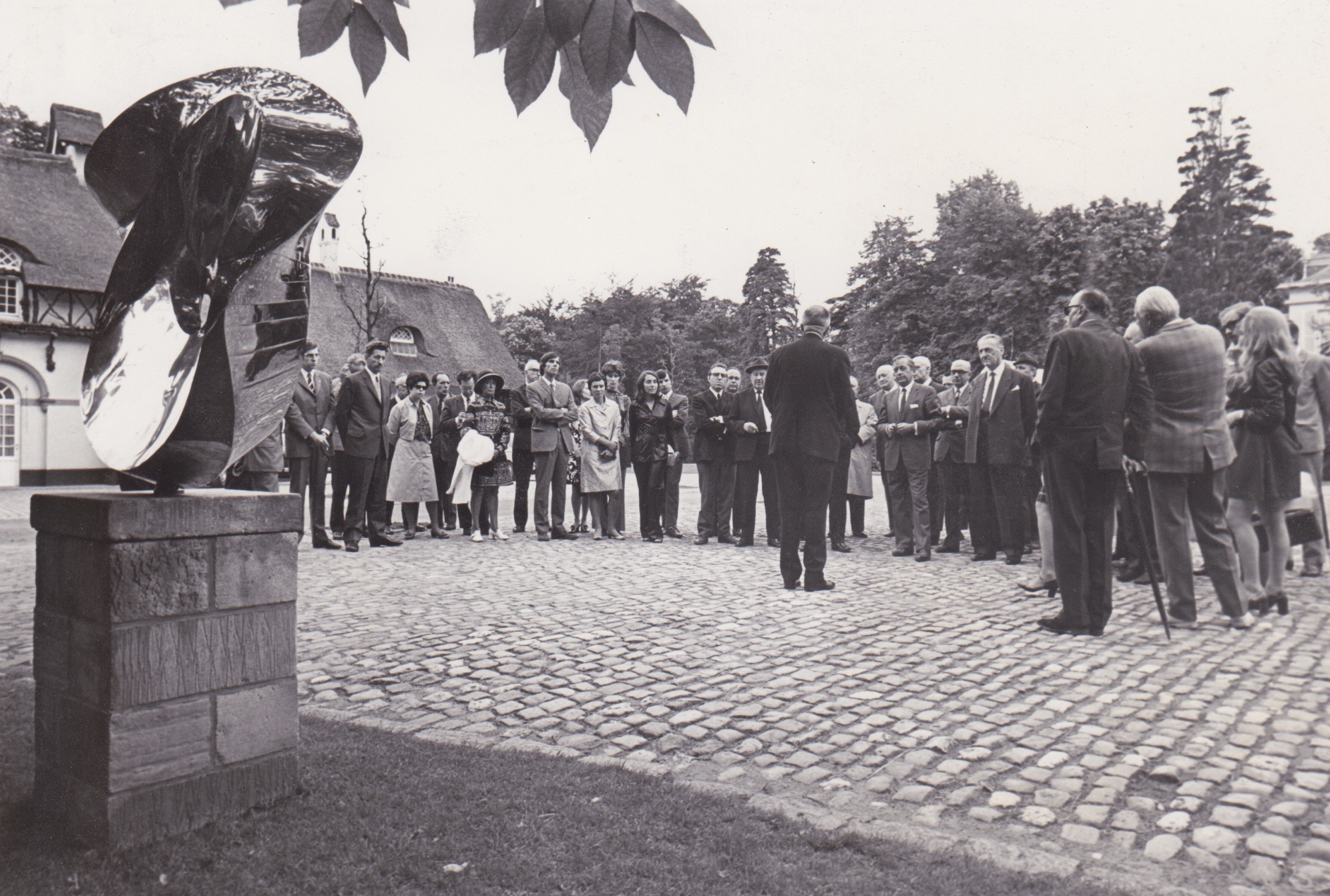
Transition - Overgang
1964
Bronze, lacquer
ø 140 cm
Unique
With this work I tried to determine the relationship between light and colour in a global spatio-temporal context. The title Transition - Overgang directly refers to the purpose and intent of the work:
- the gradual transition in arrays of form/colour
- the gradual unison of two specific organisations in an overarching entity
- the spatio-temporal shifts and changes in accordance with the movement of the spectator
-the relationship of the whole with a specific envirmonment/ light source
Movements in shape and colour follow a well-defined scheme (see studies in the posession of the Print Room of The Royal Library of Belgium), while space is put under tension by means of curves and arcs, which bring out a continuity in the overall movement.
( Trans. from the correspondence with the chief conservator of KMSKA, 1970)
Collection of KMSKA, Antwerp
Photography: unknown - archive Jean-Paul Laenen (top left); the newly restored Transition during the reopening of KMSKA in Sep 2022, © Ilse Roosens (top right); Archive image of the Transition - Overgang in the making in Laenen’s studio in Mechelen, photographer unknown - archive Jean-Paul Laenen (bottom left), Opening of the Middelheim Biennale in the attendance of King Baudouin of Belgium and Mayor Lode Craeybeckx, © Tony Van den Broeck
Studies for Transition - Overgang
Collection of the Print Room of The Royal Library of Belgium


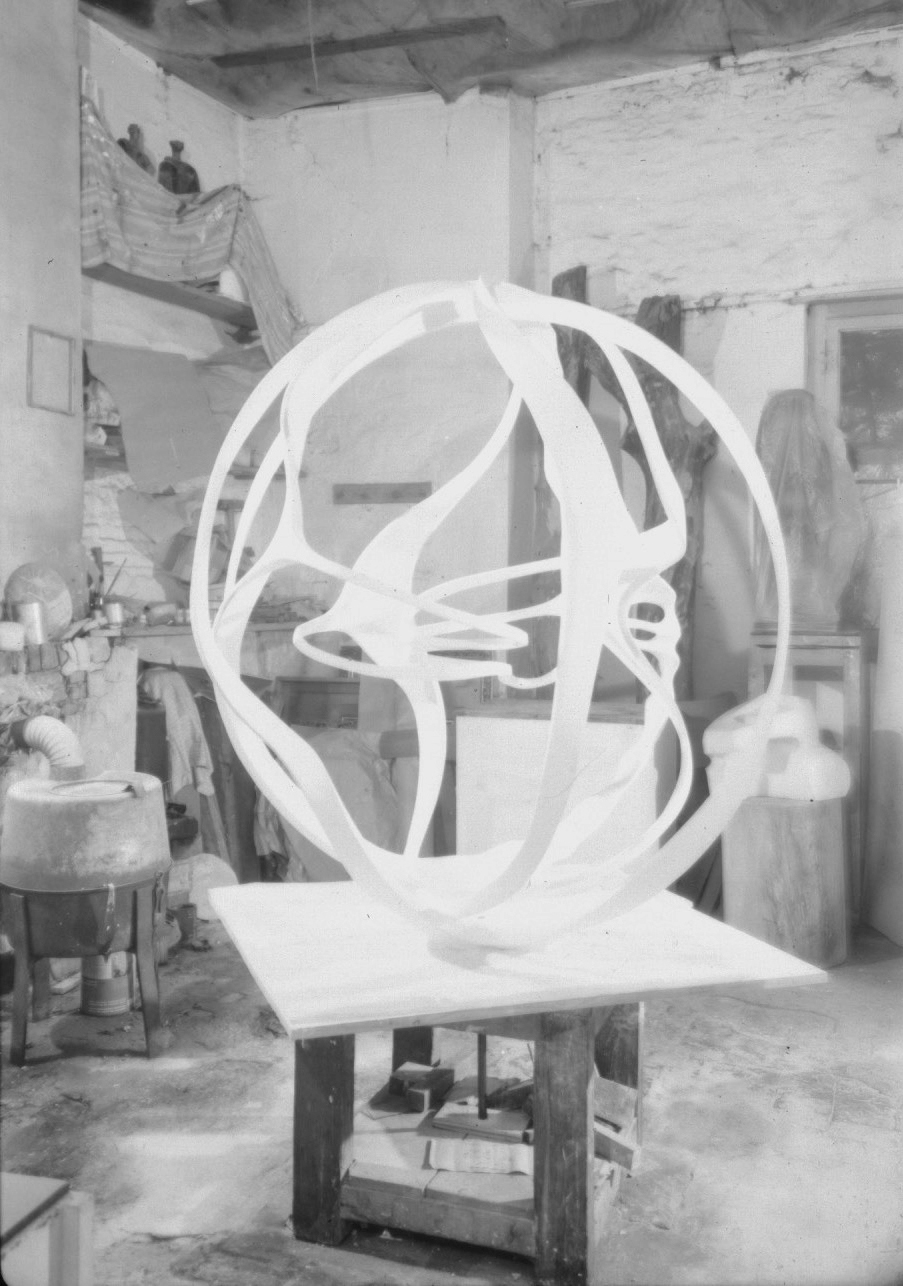
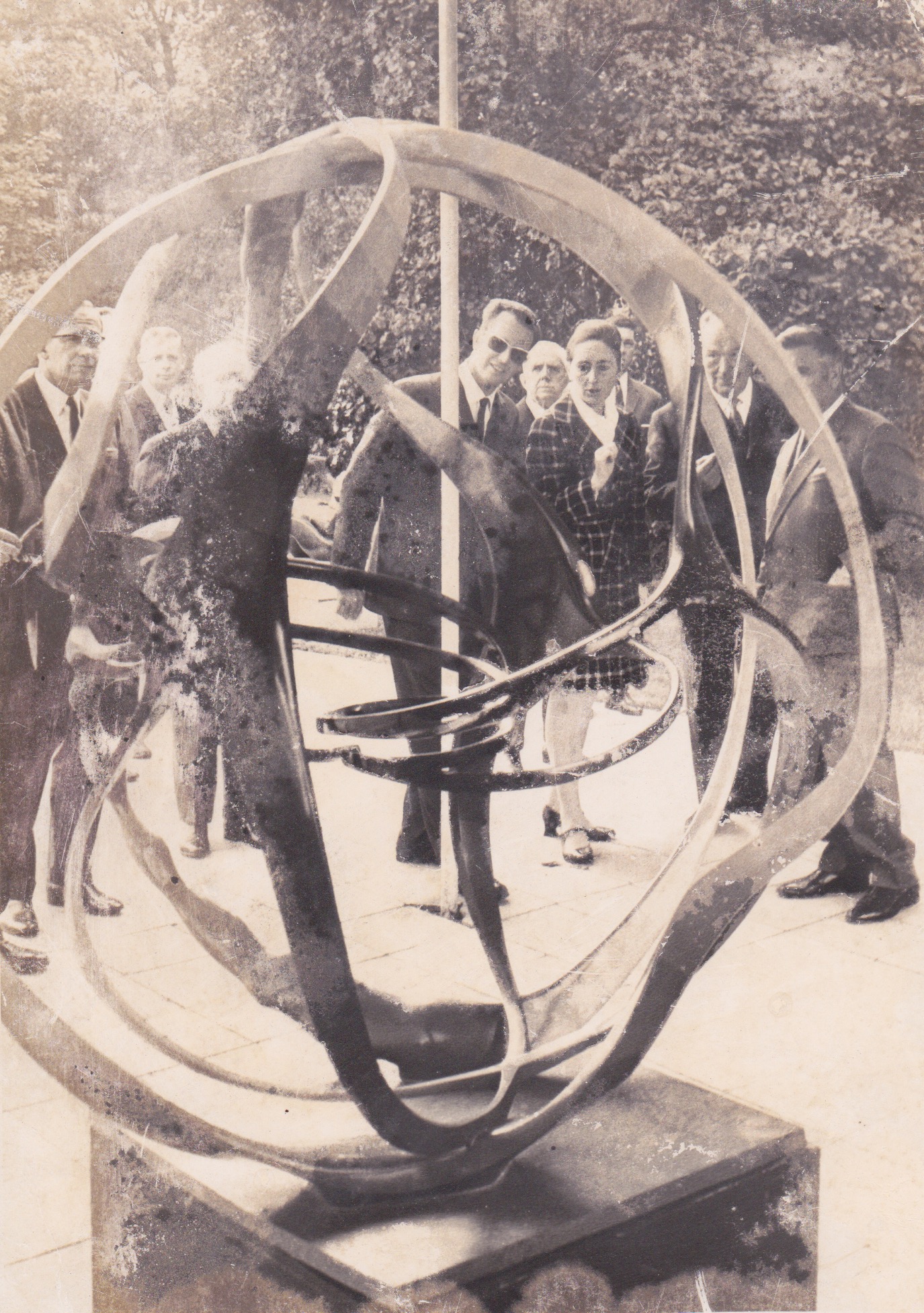
Wending - Enroulement
1965
Polished bronze, satin lacquer, formica, stainless steel
47 x 53 x 60 cm
Unique
Photography: Galerie La Patinoire Royale, Brussels (top), archive Jean-Paul Laenen (bottom)


Complementaire ruimten - Espaces complémentaires
1966
Bronze, lacquer
31,5 x 42 x 42 cm
Unique
Photography: archive Jean-Paul Laenen

Ensemble d’organisations complémentaires -
Geheel van complementaire organisaties
1967
Aluminium, lacquer
270 x 240 x 210 cm
Unique
They are fresh colours, colours reminiscent of a Dutch spring — tulips and hyacinths — more saturated for the slenderest elements, delicately pastelised for the shoots close to the ground. The light modulates them. Those who move around the sculpture discover other colours and, above all, other relationships that modify the visual relations between the elements. Approaching the orange of one of the sides, the green and blue of the other branch take on more intensity; the gradated blues are in harmony with the yellow without being dull; the lilacs and the soft greens come to life because, at the end of their course, they brush against a more intense green. There are twenty-four shades in all, but they are so judiciously distributed that, in its totality, there is no sense of a clash.
(Trans. from “Ensemble d’organisations complémentaires”, Francine-Claire Legrand)
Collection of the Royal Museums of Fine Arts of Belgium, Brussels
Photography: © Royal Museums of Fine Arts of Belgium, Brussels (top left), unknown - archive Jean-Paul Laenen (others)
Colour study for Ensemble d’organisations complémentaires - Geheel van complementaire organisaties
1966
Pencil, acrylic, Steinbach paper
62 x 81 x 3 cm
Photography: Patinoire Royale (left)
Museum of Modern Art, Brussels - Agora
Photography: Ch. Bastin - J.Evrard (right)




